Indoor cats have special diets. Their needs differ from outdoor cats’ due to their less active lifestyle. Indoor cats need theBest Dry Cat Food for Indoor Cats . It should support their health and help them manage weight. It should also cater to their unique nutritional needs.
the nutritional needs specific to indoor cats
Understanding the specific nutritional needs of indoor cats is crucial. It is vital for their health and well-being. Indoor cats have special diets. Their needs differ from outdoor cats’ due to their less active lifestyle. A balanced diet has high-quality proteins. They need to, as they provide the amino acids for muscle health. Moreover, indoor cats can be prone to weight gain, making it important to check calorie intake.
Fiber is vital in their diet. It aids in digestion and helps prevent hairballs. Essential fatty acids, such as Omega-3 and Omega-6, contribute to a shiny coat and healthy skin. Also, taurine is an amino acid found in animal protein. It is critical for heart health and eyesight. To support immune system function and prevent obesity, you must balance vitamins and minerals. Catering to the specific nutritional needs of indoor cats ensures they lead a happy life. It also keeps them healthy and active at home.
Finding the perfect dry cat food for your indoor feline friend can be daunting amidst the many options available.
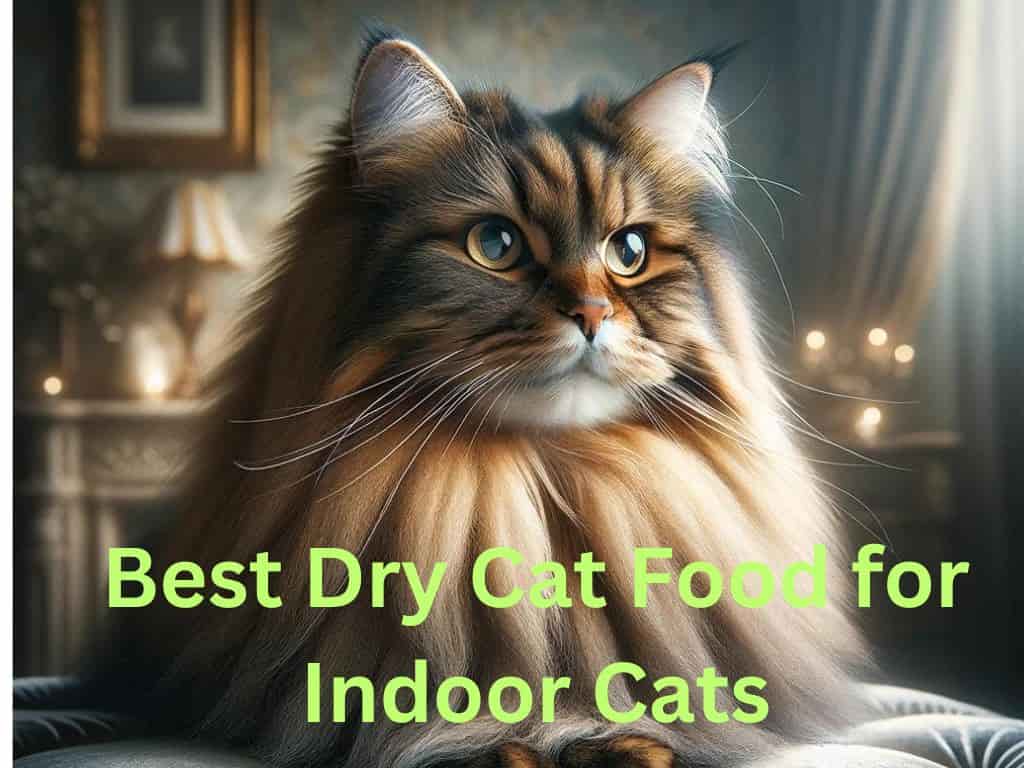
Top Picks for Your Purrfect Companion
A balanced and nutritious diet is crucial for maintaining your cat’s health and happiness. Indoor cats have specific dietary requirements that differ from those of their outdoor counterparts. They tend to be less active, which means they need food that supports a healthy weight while fulfilling their nutritional needs.
Discusses the role of fats in maintaining energy levels and a healthy coat
Fats are crucial for maintaining energy. They also support a healthy coat in both humans and animals. They are a dense energy source, providing more than double the energy per gram compared to carbohydrates or proteins. This makes fats an efficient fuel source,
This is true during prolonged exercise or in cold places. The body needs to keep heat and save energy.
Beyond their role in energy provision, fats are essential for skin and coat health. Omega-3 and Omega-6 fatty acids are essential in various animal and plant fats. These essential fatty acids help to nourish the skin,
reducing inflammation and promoting the growth of healthy, shiny fur or hair. A diet deficient in these essential fats can lead to dry, flaky skin and a dull, brittle coat.
Furthermore, fats help the absorption of fat-soluble vitamins (A, D, E, and K), vital for skin health, wound healing,
and maintaining a robust immune system. These vitamins and fats play a significant role in cell health. This includes the cells of the skin and hair.
In short, fats are vital. They give energy and maintain the health and look of the coat or hair. Incorporating a balanced amount of high-quality fats
into the diet can ensure optimal energy levels and support a vibrant, healthy coat.
The importance of protein Best Dry Cat Food for Indoor Cats indoor cat’s diet
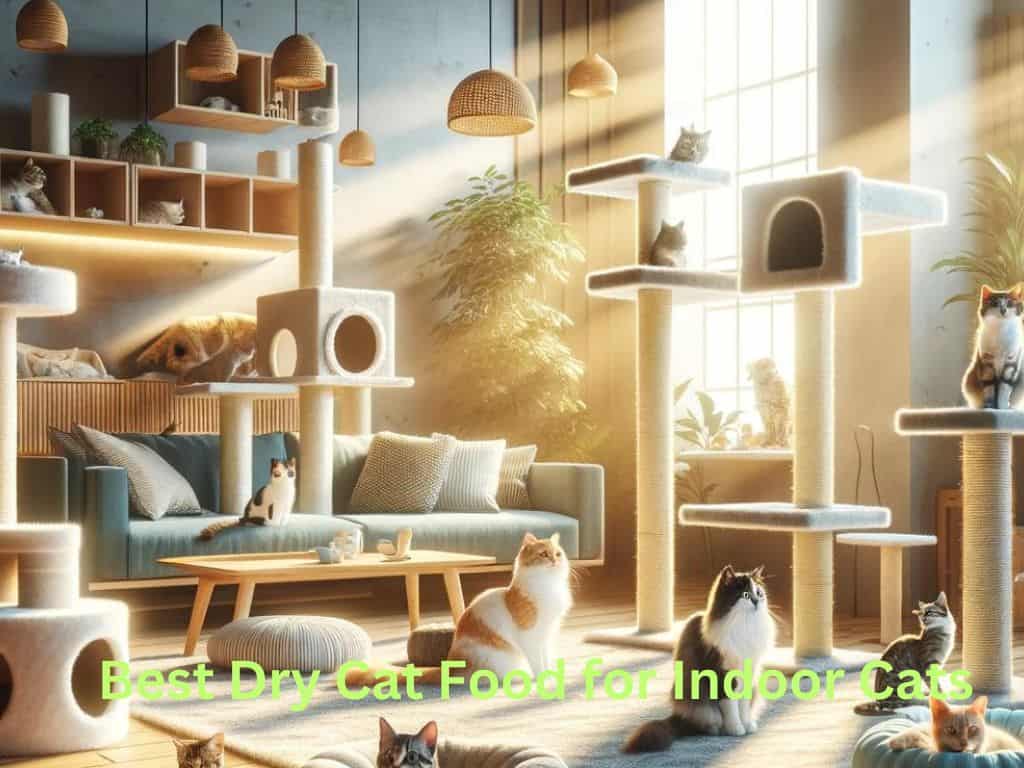
Protein is vital in an indoor cat’s diet, serving as the cornerstone of their nutritional needs. Cats, being bind carnivores, need high animal-based proteins to thrive. They supply essential amino acids. These acids are crucial for muscle, immune function, and health.
Unlike some pets, cats have specific nutritional needs. Only high-quality proteins can fulfill them. These proteins include taurine, an amino acid absent in plant proteins. This is especially true for indoor cats. They need a balanced diet rich in protein. This diet prevents obesity and keeps lean muscle.
As their activity levels might be lower than outdoor cats.
Explains the necessity and proportion of carbohydrates in a cat’s diet.
Carbohydrates play a specific role in a cat’s diet, albeit less crucial than proteins and fats. Cats are compel carnivores. Their needs are met by eating animal proteins and fats.
, a domestic cat’s diet might contain between 20% to 30% carbohydrates on a dry matter basis. This proportion supports optimal health. But, it doesn’t undercut the primary need for proteins and fats. Carbohydrates in cat foods often come from grains, vegetables, and fruits,
providing not only energy but also fiber, which helps in gastrointestinal health. It’s essential to ensure that carbs don’t replace vital nutrients in a cat’s diet. Too many carbs can cause obesity and other health issues.
The right balance supports a cat’s energy needs while maintaining health and well-being.
Nutritional Balance and Ingredients
A premium dry cat food should contain a high proportion of animal protein, essential fatty acids, vitamins, and minerals. Look for foods that list real meat, fish,
or poultry as the first ingredient. These ingredients ensure your cat gets the protein for strong muscles and health.
Weight Management for Indoor Cats
Since indoor cats are often less active, it’s vital to choose a food formula that promotes a healthy weight. Foods for weight management have fewer calories. They do not compromise on nutrition or taste.
Hairball Control: A Must-Have Feature
Given that indoor cats spend a lot of time grooming, a diet that aids hairball control can improve their comfort and well-being. Fiber-rich formulas help move hair through the gut. They reduce hairball formation.
Taste and Palatability
Your cat’s food should not only be nutritious but also appealing to their taste buds. High-quality dry foods are formulated to please even the pickiest eaters, ensuring your cat enjoys every meal.
Lists and reviews top dry cat food brands suitable for indoor cats.
Discover the best dry cat food brands for your indoor feline friend! Indoor cats have unique dietary needs, and the right dry food can help maintain their health, weight, and energy levels. Our top picks include:
1. Blue Buffalo Indoor health is a holistic blend. It has life-source bits. It offers a perfect mix of proteins, grains, and fruits.
2. Hill’s Science Diet Indoor cats support the energy needs of indoor cats. It promotes healthy digestion and lean muscle.
3. Purina Cat Chow Indoor -Affordable and nutritious, it’s designed to support a healthy weight and reduce hairballs.
4. Royal Canin Indoor Adult -Tailored for indoor cats 1-7 years old, it aids in odor reduction and maintains a healthy weight.
5. Iams ProActive Health Indoor Weight and Hairball Care
Helps maintain a healthy weight and reduces hairballs, making it ideal for indoor cats.
Each brand brings something unique to the table. They cater to the varied needs of indoor cats, from weight management to hairball control. Choosing the right brand can lead to a happier, healthier life for your indoor cat.
A detailed review of a top dry cat food brand.
It meets the needs of indoor cats. Blue Buffalo Indoor Health stands out. It’s a great choice for pet parents who want the best nutrition for their furry friends. This premium dry cat food is crafted with the finest natural ingredients, ensuring a balanced and wholesome diet for your indoor cat. Let’s delve into what makes Blue Buffalo Indoor Health the go-to choice for cat owners.
High-Quality Protein Source: At the core of Blue Buffalo’s formula is real meat. Chicken, the primary ingredient, provides high-quality protein that supports lean muscle mass in indoor cats, crucial for their health and mobility.
LifeSource Bits:
Veterinarians and animal nutritionists chose a blend of antioxidants, vitamins, and minerals. It’s called LifeSource Bits and is unique to Blue Buffalo. These bits support immune health and life stage needs. They promote a healthy oxidative balance, offering a nutritional edge.
Wholesome Grains and Vegetables:
Blue Buffalo Indoor Health includes balanced whole grains, such as brown rice and barley, which contribute to digestive health. Sweet potatoes and peas are vegetables. They have vitamins and minerals. They support your cat’s well-being.
Weight Management and Hairball Control:
This food is formulated for indoor cats. It contains an optimal blend of calories and fiber. This blend helps cats keep a healthy weight. It also includes natural fiber sources to cut hairballs, a common issue among indoor felines.
No Artificial Preservatives or Flavors:
Blue Buffalo prioritizes your cat’s health by excluding artificial preservatives and flavors from their ingredients list, ensuring your cat gets only the best.
Explains how a cat’s nutritional needs change with age.
A cat’s nutritional needs evolve as they progress through different stages of life, requiring adjustments to their diet to ensure optimal health and well-being. Understanding these changes is crucial for cat owners to provide appropriate care at each stage of their pet’s life.
Kitten Stage (0-12 months):
During their first year, kittens grow . They need a diet rich in proteins and fats to support their development. This includes muscle growth and bone health. High-calorie diets that are nutrient-dense support their energy needs. Kittens also need more vitamins, minerals, amino acids (like taurine), and omega fatty acids than adult cats.
Adult Stage (1-6 years):
As cats reach adulthood, their diet needs to shift towards maintaining optimal health and preventing obesity. Adult cats need a balanced diet. It should be high in protein but with moderate fat levels and controlled calories. This diet will support a lean body mass and meet their energy needs without leading to weight gain.
Senior Stage (7 years and older):
Senior cats often face a decrease in metabolism and may be less active, requiring fewer calories. Yet, their protein needs remain high to help maintain muscle mass. Senior diets often have increased fiber content to aid in digestion and cut hairball issues. Additionally, they may need more accessible forms of nutrients, such as wet food,
due to potential dental problems. Give special attention to keeping hydrated. Also, manage chronic conditions like kidney disease or arthritis by adjusting diet.
Special Considerations: Throughout a cat’s life, specific health issues may need dietary changes. For instance, cats with kidney disease may enjoy lower protein levels and phosphorus to reduce kidney workload. Diabetic cats might need a diet lower in carbohydrates to help manage blood sugar levels.
Discusses how existing health conditions can affect food choice.
Cats with health conditions have special dietary needs. Their needs can change, so the choice of food is key. It helps manage their health and well-being. Nutrition is key to treating and managing feline diseases. The right diet can reduce symptoms, slow disease, and improve life. Here’s how some common health conditions in cats affect food choice:
Kidney Disease:
Cats with kidney disease need diets with less protein and phosphorus. This reduces the workload on the kidneys and slows the disease’s progression. These diets also tend to have more omega-3 fatty acids. These reduce inflammation. They also have more antioxidants to support kidney function.
Diabetes: Diabetic cats enjoy diets that are low in carbohydrates and high in protein to help regulate blood sugar levels. Consistent feeding schedules and part control are also crucial to manage this condition .
Obesity: Overweight cats need a controlled diet that is lower in calories but still complete to ensure they lose weight . Increased fiber can help them feel full, and a gradual transition to a healthier weight is important to avoid other health issues.
Urinary Tract Health: Cats prone to urinary tract issues, such as crystals or bladder stones, may need diets formulated to control the pH of their urine. Wet food can also help increase water intake, diluting the urine and reducing the risk of stone formation.
Gastrointestinal Issues: Cats with gastrointestinal problems may enjoy diets with digestible ingredients, added probiotics, and a balance of fibers to support gut health and regularity. Wet food can be beneficial for hydration and ease of digestion.
Dental Health: Cats with dental issues might need formulated diets that help reduce plaque and tartar buildup. Soft, wet foods can also be necessary for cats with severe dental problems or those who have had teeth removed.
Choosing the right food for a sick cat requires careful thought. You need to consider the needs their illness creates. It often requires consultation with a veterinarian to select a diet that best supports the cat’s health, considering the progression of their condition,
their health, and any concurrent diseases. Picking the right diet is crucial. It lets cat owners manage their pet’s health and improve their quality of life.
Emphasizes the importance of high-quality ingredients in cat food.
The quality of ingredients in cat food is paramount to ensuring the health, vitality, and longevity of our feline companions. High-quality ingredients influence the nutritional value of the food,
its digestibility, and the ability of our cats to absorb and use the nutrients essential for their well-being. Here’s why emphasizing high-quality ingredients in cat food is crucial:
The best nutrition has high-quality ingredients. They have more nutrients. They give cats the ideal mix of proteins, fats, and vitamins. These are vital for their health.
Enhanced Digestibility: Better ingredients translate to improved digestibility. This means that cats can more absorb the nutrients they need from their food, leading to better health outcomes and less waste. This is particularly important for cats with sensitive stomachs or gastrointestinal issues.
Reduced Allergic Reactions:
Cats, like humans, can have allergies or sensitivities to certain ingredients found in lower-quality cat foods,
such as fillers, artificial colors, or preservatives. High-quality cat foods often end these potential allergens, focusing instead on natural and wholesome ingredients that are less likely to cause adverse reactions.
Better Taste and Palatability: High-quality ingredients often taste better to cats. This is because they are fresher and closer to their natural diet, making the food more appealing and satisfying. This can be especially important for picky eaters or older cats who may have lost some of their sense of taste and smell.
Supports Long-Term Health and Vitality:
Feeding your cat a diet with high-quality ingredients can boost its immune system. It can also improve its coat and skin, energy levels, and weight. Over time, this can lead to fewer health problems and lower veterinary bills.
Environmental and Ethical Considerations: High-quality ingredients are not only better for our cats but often reflect more sustainable and ethical farming and production practices. Choosing brands that rank sourced ingredients supports animal welfare and environmental health.
In conclusion, investing in cat food made with high-quality ingredients is an investment in your cat’s health and happiness. It’s about providing the best care for our cat friends. We want to ensure they lead happy, healthy lives with us. While high-quality cat food might come at a premium, the benefits it brings to your cat’s health and well-being are immeasurable.
Safety and Quality Assurance
Choosing a brand that adheres to strict quality control measures is crucial. Opt for products free from artificial preservatives, colors, and flavors to ensure your cat’s food is safe and wholesome.
Provides guidelines on how much and how often to feed indoor cats.
Feeding indoor cats is crucial to maintain their health, manage their weight, and prevent obesity-related health issues. Indoor cats often have lower energy needs than their outdoor counterparts due to their more sedentary lifestyle. Here are some general guidelines on how much and how often to feed indoor cats:
Understanding Daily Caloric Needs
Caloric Intake: The average indoor cat needs approximately 20 calories per pound of body weight per day, but this can vary based on age, weight, and activity level. For example, a healthy, 10-pound indoor cat needs about 200 calories daily.
Feeding Frequency
Adult Cats: It’s recommended to feed adult cats twice a day. Dividing their daily food intake into two meals helps manage hunger and maintains a routine.
Kittens: Kittens need more frequent feeding, up to three or four times a day, due to their higher energy needs for growth.
Measuring Food Portions
Read Labels: Always start by checking the feeding guidelines on your cat food’s label, as calorie content can vary between brands and formulas.
Adjust as Needed: Check your cat’s weight and adjust food portions. If your cat is gaining unwanted weight, reduce the part size. If underweight, consult your veterinarian to adjust feeding amounts.
Types of Food
Dry vs. Wet Food: Both have their benefits. Wet food can help increase water intake, which is beneficial for urinary tract health, while dry food can be better for dental health. Some owners opt for a mix of both for balanced nutrition.
Quality matters. Choose premium cat food that meets your cat’s nutritional needs. Base your choice on their age, health, and diet.
Monitoring and Adjustments
Regular Check-ups: Regular veterinary check-ups are important to assess your cat’s health and make dietary adjustments as needed.
Body Condition Scoring: Learn to assess your cat’s body condition. Cats should have a slight waist when viewed from above, and ribs should be palpable but not visible.
Encouraging Healthy Eating Habits
Provide Fresh Water: Always ensure your cat has access to fresh, clean water.
Limit Treats: Treats should not make up more than 10% of your cat’s daily caloric intake to avoid weight gain.
Interactive Feeding: Use puzzle feeders to stimulate your cat’s mind and mimic the hunting process, promoting slow and interactive eating.
Remember, these guidelines are a starting point. Each cat is unique, and factors such as metabolism, activity level, and even breed can influence nutritional needs.
FAQ
1. What makes dry cat food ideal for indoor cats?
Many people think dry cat food is best for indoor cats. It’s convenient and lasts longer than wet food. It also may help dental health. It can also assist in weight management through controlled part sizes, which is crucial for less active indoor cats
2. Is high protein content important in dry cat food for indoor cats?
· Yes, high protein content is important in dry cat food for indoor cats to support lean muscle mass and health. Since cats are bind carnivores, their diets should be rich in animal proteins to meet their nutritional needs, even for less active indoor cats.
3. Can dry cat food help with hairball control in indoor cats?
Many dry cat foods are for indoor cats. They have fiber blends and ingredients. These help with digestion and cut hairball formation. These formulas can help indoor cats pass hair through their digestive tract more , reducing hairballs.
4. How often should I feed my indoor cat dry food, and how much?
· The amount and frequency of feeding depend on the cat’s age, size, activity level, and the specific caloric content of the dry food. Generally, adult indoor cats are fed twice a day. Portion sizes are adjusted by the cat’s weight and energy needs.
Conclusion: The Purrfect Choice for Indoor Cats
You must select the best dry cat food for your indoor cat. This involves considering nutrition, weight management, hairball control, and taste. Choose a high-quality, balanced diet. It will ensure your cat leads a happy, healthy, and satisfying indoor life.
In your quest for the ideal dry cat food, remember that every cat is unique. It may take some experimentation to find the perfect match. But, with the knowledge from this guide, you’re well on your way. You’ll provide the best care for your indoor pet.


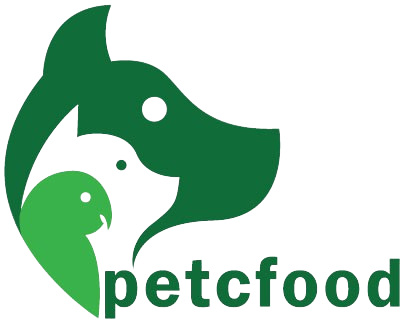
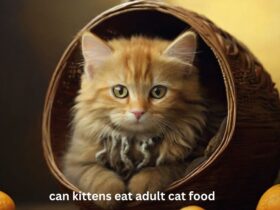
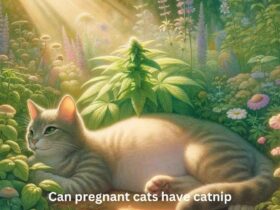
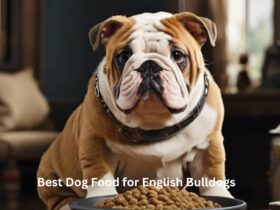
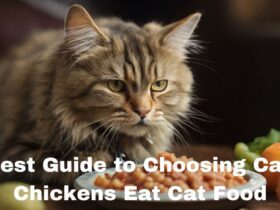





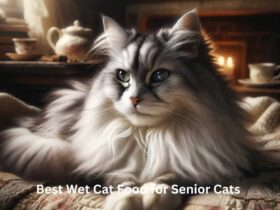
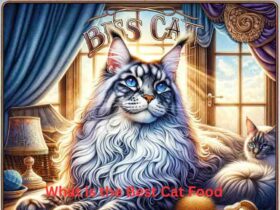
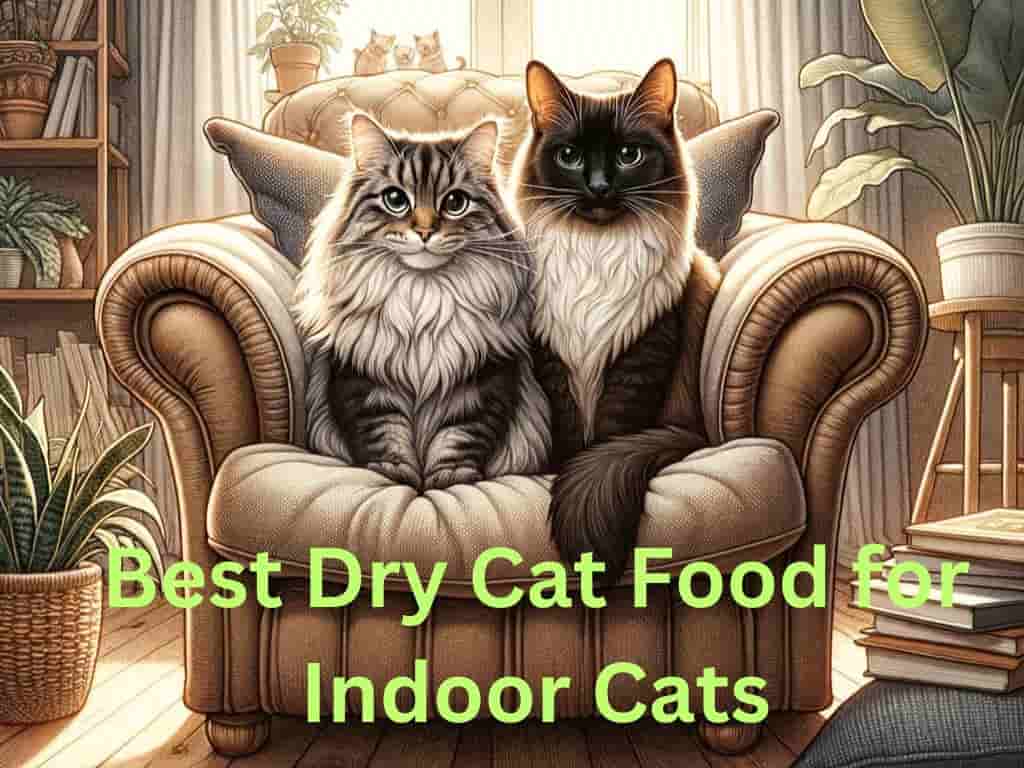
Leave a Review